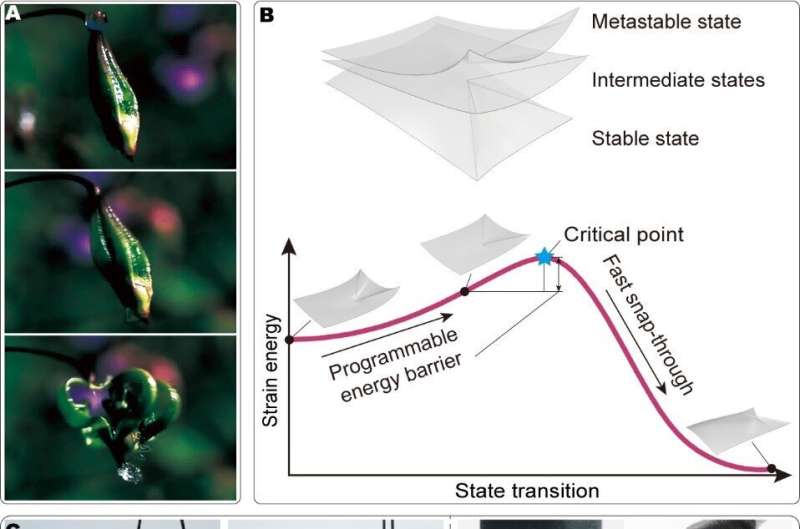Researchers at the Chinese Academy of Sciences have proposed a customizable ultra-tunable bistable structure for robotics that enhances robot performance.

Bistable structures in nature offer fast response and force amplification from small physical stimuli. Using their bistability and instability to release stored energy could enhance robot performance in high-speed locomotion, adaptive sensing, and fast grasping. Current research on bistable structures mostly ignores intermediate states with adjustable energy barriers.
A research team led by Dr. Li Yingtian from the Shenzhen Institute of Advanced Technology (SIAT) of the Chinese Academy of Sciences have proposed an ultra-tunable bistable structure with programmable energy barriers and trigger forces, along with customized options for different robotic uses.
The structure is made by folding a sheet material with a crease pattern, creating stable, metastable, and many intermediate states. The stored energy reaches a maximum value at the critical point, causing a fast snap-through when transitioning from the metastable to a stable state. The work reports on the programmable energy barriers of the enormous intermediate states before the bistable structure reaches its critical point. The researchers achieved a wide range of adjustable trigger forces for their controllable bistable structure by decreasing the energy barrier as the structure is reshaped from the metastable state to any intermediate state.
The researchers conducted experiments to demonstrate the proposed structure’s tunability. They showed that the trigger force of a single structure could be tuned to 0.1% of its maximum value, and grippers fabricated with different design parameters showed a weight difference of 107 times greater when lifted. As per the researchers, the structure can be tuned to ultra-sensitive or insensitive states, responding to a gentle touch or a 110g steel ball. Various prototypes, such as a robotic flytrap, grippers, a jumper, a swimmer, a thermal switch, and a sorting system, were developed to showcase the potential applications of the structure. The prototypes demonstrate the sensitivity of the robotic flytrap’s “pistil” to physical stimulation, with a response time of 10 ms; the bistable catcher can capture a high-speed table tennis ball traveling at 10 m/s, and the minimal jumper can reach a height more than 24 times its body height.
The researchers believe that the work could lead to future robotics, biomedical engineering, architecture, and kinetic art designs, broadening the frontiers of bistable structure design.
Reference : Yongkang Jiang et al, Ultra-tunable bistable structures for universal robotic applications, Cell Reports Physical Science (2023). DOI: 10.1016/j.xcrp.2023.101365






